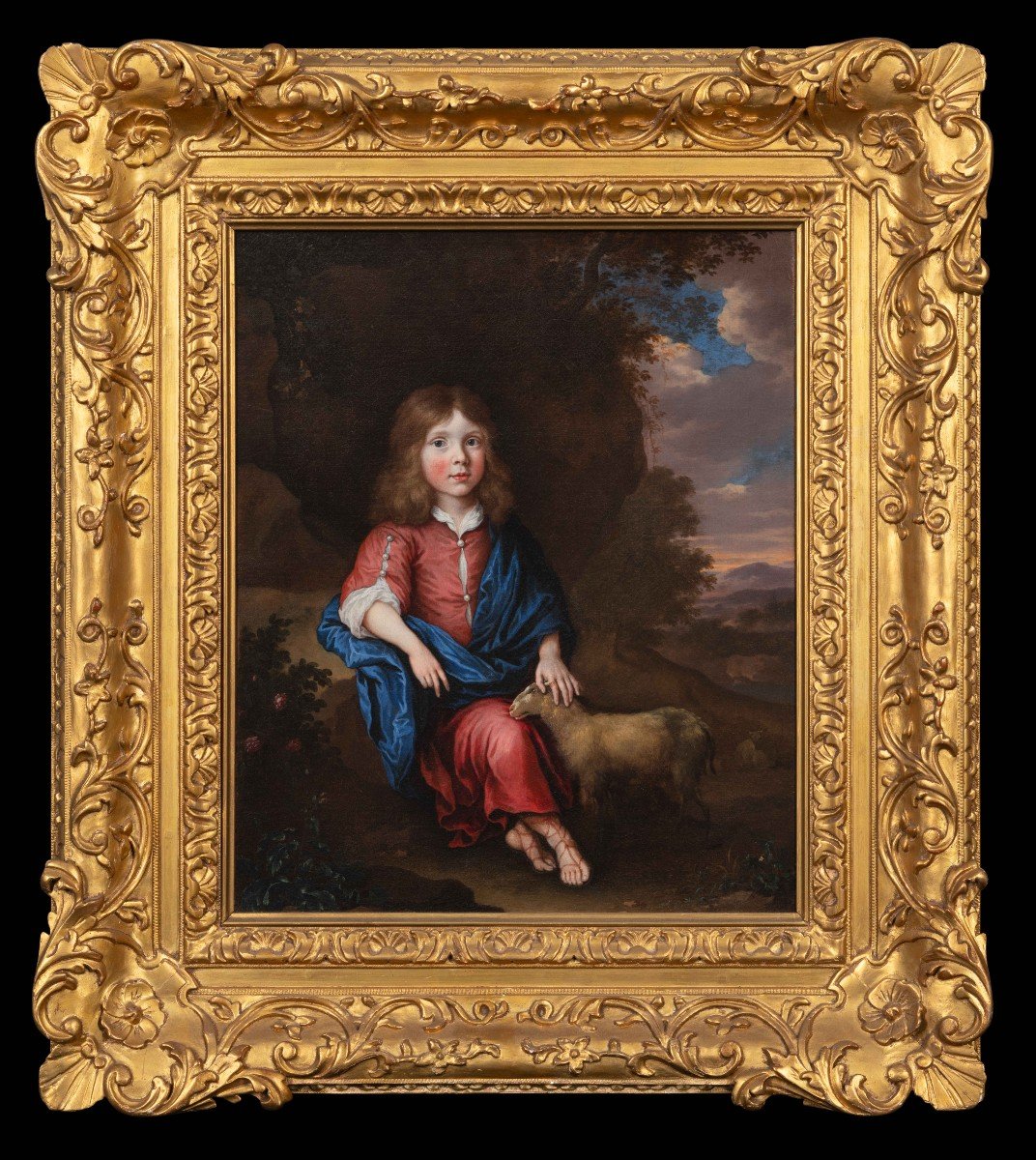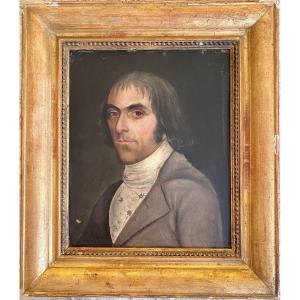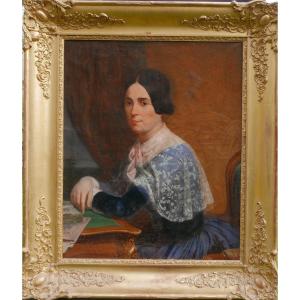The young sitter is Walther Bernt Pieter Van der Dussen. He was born into a wealthy noble Catholic family in Delft in 1654. In this portrait he would be around ten years of age, dating the work to circa 1664, which is also the year before the artist’s marriage to Johanna van Heusden. The Van der Dussen family were great patrons of the arts and commissioned a number of major works from eminent artists in Delft & Amsterdam. Van der Dussen died in 1716.
The wooded setting, the lamb, and the “picturesque” or “Roman” dress imbues the portrait with a sense of Arcadian simplicity. This draws from the tradition of pastoral literature and by the early 17th century was already popular in art; all educated individuals were familiar with Latin and Greek pastoral poetry. The mythological world of Arcady was an idyll that the ladies and gentlemen of the Court could inhabit in the guise of shepherds and shepherdesses. The pastoral tradition in literature and plays had been embraced by an aristocratic class since classical times. Life in the country was perceived as peaceful, contemplative and free of worry of hardships, a time to pursue pleasure. To be painted in such a manner created a tangible expression of power and wealth. When the portrait was painted the pastoral was so ingrained that the mere inclusion of such elements suggested Arcadia to the viewer. Of course, the sitter did not live in such a world and this exquisitely detailed painting was a step from reality into a tranquil world.
Symbolism was important in portraiture and it provided a pointed and aspirational narrative that would not have been lost on contemporary viewers. For example, the presence of the lamb, apart from being a charming pictorial device, is a clear allusion to the child’s innocence.
Presented in a good antique frame.
Johannes (Jan) van Haensbergen was a Dutch Golden Age painter who was born in Utrecht in 1642. By 1668 he was registered there at the Guild of St. Luke and one year later he was working in The Hague, where he was not only painting many of the local elite but he also became an art dealer. His output was prolific and his very skilful and detailed portraits, clearly showing his influence by Casper Netscher, bolstered his popularity. He died in The Hague in 1705.
Provenance:
With Bonhams 5 July 2006, estimated £5,000 – £7,000
Measurements:
Height 67cm, Width 59cm framed (Height 26.25”, Width 23.25” framed)
























 Le Magazine de PROANTIC
Le Magazine de PROANTIC TRÉSORS Magazine
TRÉSORS Magazine Rivista Artiquariato
Rivista Artiquariato
